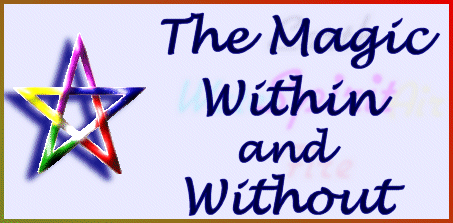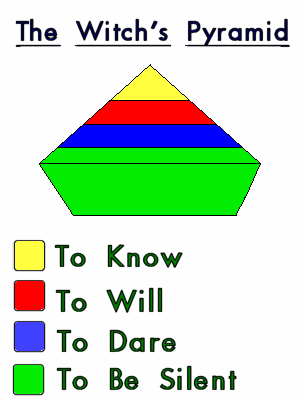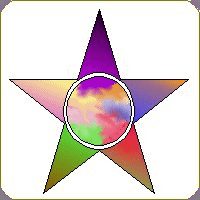
Magic has been performed for thousands of years. It probably can be even traced back to the pre-historic times.
| Types of Magic
Subcategories Four Conditions Elements |
High Magic, also known as ceremonial magic, is the type of magic that enables the person to progress to and work with a higher spiritual realm. Yoga, transcendental meditation, Taoism, and Kabbalah all deal with higher spirituality. To become adept in these practices require a great deal of time (almost a lifetime), energy, and concentration.
Low magic, also known as practical magic, is the type of magic that attempts to make changes or fortell events in the physical world. The practitioner does not usually attempt to move to a higher level of spirituality, but instead usually attempts to try to bring the elements of the higher levels "down to earth". This is done to bring about changes or stability, or work with events to come. Witchcraft, necromancy, spell casting, the making of charms and talismans, and evocation or summoning of spirits are forms of low magic. All the types of divination (tarot reading, numerology, astrology, tea leaves reading, scrying, et al.) is also considered part of low magic.
![]()
Low magic is what
I currently study. There are many books about low magic that are out in
bookstores; some are full of helpful information and some just trying to
make a quick buck. Even though divinations and conjuring look easy,
it does take some time to practice and have a solid understanding.
Evocations are nothing to sneeze at, you have to know who you are summoning
and why you did so.
There are those who think that doing magic
is as simple as snapping the fingers. For a select few, it’s true. But
consider magic as a form of art or a type of firearm. You can pick up a
marker or a .45 revolver and use it, but without practice, an average person
isn’t likely to get the best results he or she wants. In fact, like with
the revolver, the results can be worse than what the practitioner expected
to happen. Yeah, it can be dangerous, but that’s why not everybody uses
magic. Not everybody carries around a concealed weapon, and not everybody
who carries a concealed weapon is either careless or malevolent. Magic
is a tool, divinatory or active. That’s why one form of low magic is called
witchCRAFT. Since many non-magic tools aren’t used to help solve all of
life’s problems, magic shouldn’t be the exception.
![]()
Most low magic is subcategorized into three
parts, according to the results and intentions of the practitioner:
White Magic
Grey Magic
Black Magic
NOTE: If you are not into
ethics, magic is just magic!
![]()
FOUR CONDITIONS
There are four conditions that a practitioner
adheres to in order to lead a straight, focused path in magic. Depending
on the tradition, these conditions are listed in a certain order. It is
believed that this is one of the things Witchcraft borrowed from the teachings
of Aleister Crowley.
With Wicca or Witchcraft,
the four conditions are group together as the Witch's Pyramid:

The Four Powers of the Sphinx are associated with the Thelemic Order by Aleister Crowley's teachings, though Eliphas Lévi was the first to mention the Four Powers. These are also known as The Four Powers of the Magus. They are as follows:
- To Know
- To Will
- To Dare
- To Be Silent or To Keep The Silence
Obviously, there are striking similarities between the Pyramid and the Sphinx - never mind the Egyptian relation. Click on the words to get a detailed explanation of these conditions.To Know To Dare To Will To Keep Silent
To Know
To Will
To Dare
To Keep Silent
![]()
The Five Elements
 Air
- intelligence, communication, and the arts
Air
- intelligence, communication, and the arts
Earth - stability, practicality, and physical endurance
Fire - courage and daring
Spirit/Akasha/Quintessence - the All and the Divine
Water - emotions
and intuition